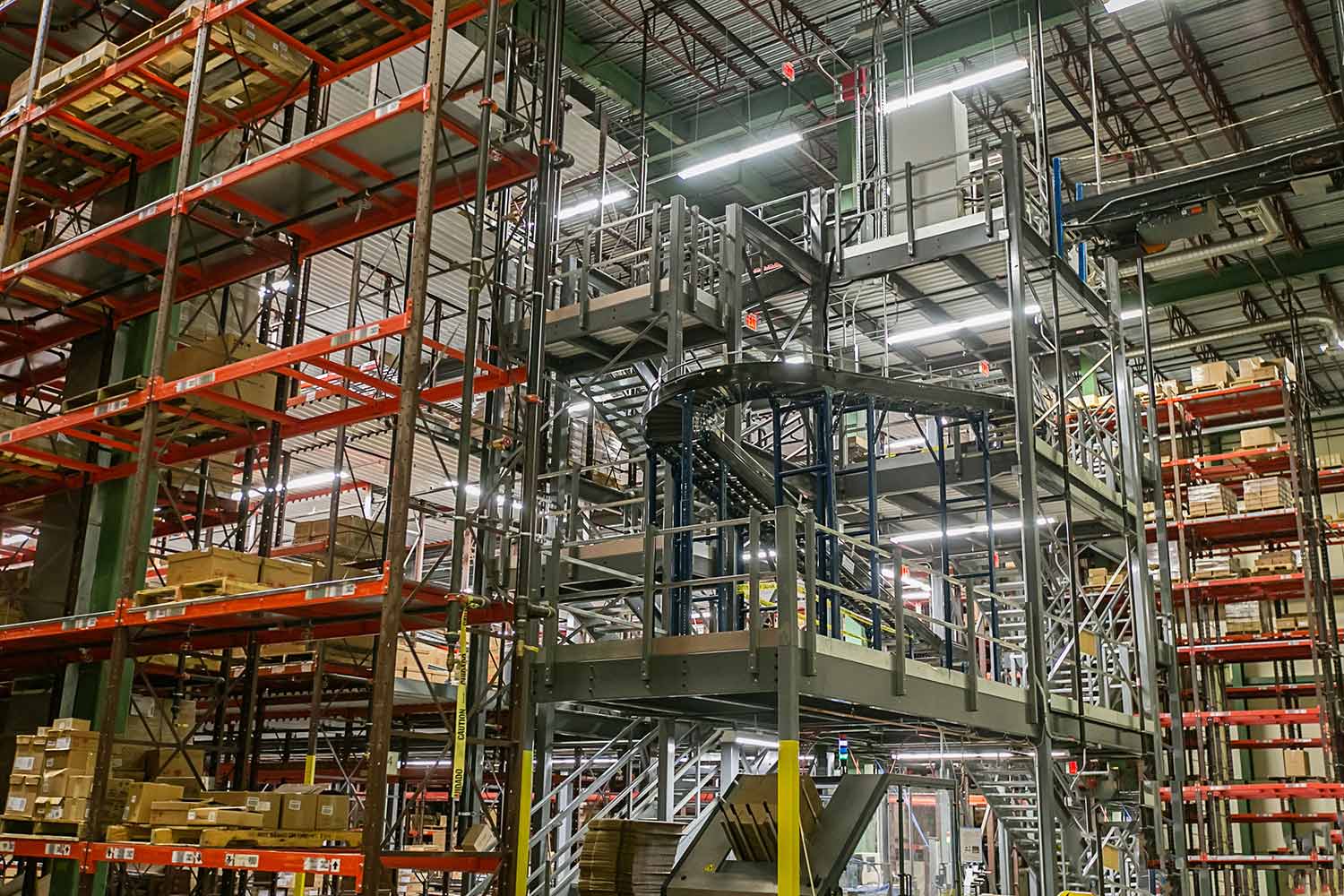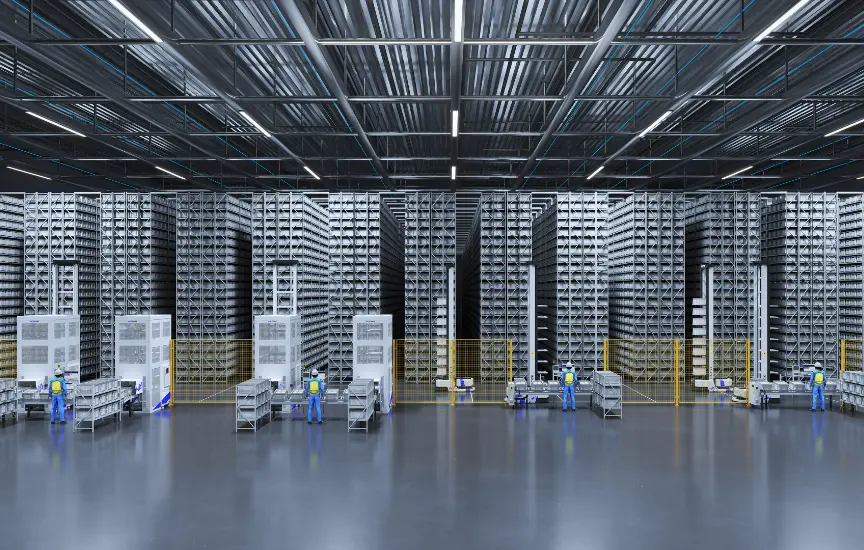
January 15th, 2024
4 min readThe Future Warehouse Requires Robotics – Are You Prepared?
Warehouse robotic implementation is growing more rapidly. Businesses that embrace this technological wave position themselves for future success.
Robotic technology is the future of warehousing – of that there is no doubt. Navigating toward this future, though, requires taking stock of where your company is now. There are several stages of robotic implementation in warehouses and distribution centers. For the sake of this article, we’re breaking it down into four categories:
Stage 1 – Low Automation
Stage 2 – Limited Automation
A minimal robotic implementation in a warehouse typically involves the use of some autonomous robots to perform basic tasks such as material handling and transportation.
Stage 3 – Systemized Automation
A substantial robotic implementation in a warehouse involves a more comprehensive and advanced use of robotics and automation technologies to optimize more warehouse processes.
Stage 4 – Sophisticated Automation
A full, end-to-end robotic implementation in a warehouse represents a highly automated and technologically advanced system where robots handle almost every aspect of warehouse operations.
Understanding how such automation can revolutionize your operations is vital for staying competitive in today’s logistics landscape.
Benefits of Robotics for Fulfillment and Distribution
The implementation of robotics in a warehouse can translate into a myriad of benefits. Here are some of the key ones:
- Improved Operational Efficiency and Safe Operations
- Increased Accuracy and Reduced Errors for Faster Fulfillment
- Greater Scalability, Flexibility, and Adaptability
- Enhanced Data Analytics and Insights
- Optimized Space Utilization
Improved Operational Efficiency and Safe 24/7 Operations
Robots can operate continuously, enabling warehouses to run 24/7 without the need for shift changes or breaks.
This continuous operation is particularly beneficial in meeting the demands of e-commerce and global supply chains with various time zones. Safety features are built into robotic systems eliminating strenuous, repetitive, or hazardous tasks for human workers. Ultimately reducing the risk of workplace injuries and improving overall safety.
Increased Accuracy and Reduced Errors … and Yet, Faster Order Fulfillment
Automated picking and packing systems, including robotic arms and conveyor systems, enable faster and more efficient order processing.
Real-time inventory tracking and automated workflows contribute to quicker response times. Robotics systems, equipped with sensors and precision technology, significantly reduces errors in tasks like picking, packing, and sorting. Enhanced accuracy leads to improved inventory management, reduced shipping errors, and fewer customer complaints.
Greater Scalability, Flexibility, and Adaptability
Robotics allows for easy scalability, enabling warehouses to adapt to changes in demand without a proportional increase in labor.
These systems are designed to be flexible and easily reprogrammable, allowing for quick adaptation to changes in product types, warehouse layouts, or operational requirements. This flexibility in turn enables warehouses to handle a more diverse range of products and tasks.
Enhanced Data Analytics and Insights
Robotic systems generate data that can be analyzed to gain insights to increase operational efficiency.
Data analytics allows for continuous improvement, identifying areas for optimization, predicting maintenance needs, and even seeing demand fluctuations before they occur.
Optimized Space Utilization
Finally, robotic solutions such as automated storage and retrieval systems (AS/RS) maximize vertical space, allowing for denser and more efficient storage of goods. What’s more, compact robotic systems can navigate through tight spaces, optimizing the overall layout of the warehouse and keeping your footprint as small as possible.
Downsides to Not Adopting Robotic Technologies?
While there are benefits to implementing robotics in a warehouse, there are also downsides to not adopting such technologies – many of which are the other end of the spectrum:
- Higher labor costs, especially in regions with labor shortages
- Inefficiency and slower operations
- Increased production and fulfillment errors
- Limited scalability and flexibility
- Safety concerns
- Inability to leverage data
These downsides contribute to an overall competitive disadvantage. Your competitors are already implementing robotics and moving toward Stage 4 – Sophisticated Automation. If your warehouse or distribution center falls in the first stage, or maybe even the second, robotics might be somewhat intimidating – but with the right integration partner, it doesn’t have to be.
Your Next Step
Some 79% of supply chain respondents to a 2022 survey by the Material Handling Institute said they planned to adopt robotics and automation within the next five years – defining the shift in remaining competitive.
Don’t be left behind: Now is the time to investigate how robotics, automation, and AI-driven systems can optimize your operations to prepare for future demand. Contact our team today.
Related Posts

The Human-Robot Partnership Requires an Upskilled Warehouse Workforce
Article
Professional Integration is Crucial for Warehouse Automation & Robotics Implementation
Article